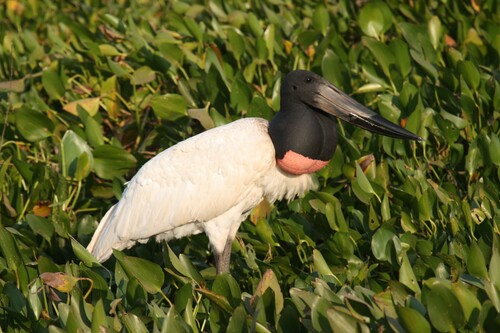
Jabiru
The Jabiru stork, towering in wetland habitats, is a striking figure with its vivid black and white plumage and iconic red throat. Renowned for its fishing prowess, it plays a vital role in the ecosystem, controlling aquatic populations and supporting biodiversity.
36 years
Lifespan
4.31 - 8.98 kg
Weight
Length: 1.19 - 1.4 m
Size
Red, Black, White
Color
Least Concern
Conservation Status
Unknown
Population Trend
Characteristics
The Jabiru (Jabiru mycteria) is a large stork found in Central and South America. It is notable for its striking black and white plumage and a distinctive red throat pouch. These birds inhabit wetlands and floodplains, where they use their long bills to catch fish and amphibians.
Distribution Range of the Jabiru
The Jabiru mycteria, commonly known as the Jabiru, is native to the Neotropical region. Its geographical distribution spans a large area across the Americas, predominantly found in Central and South America. Key countries where the Jabiru is naturally found include Mexico, Guatemala, Belize, Honduras, Nicaragua, Costa Rica, Panama, Colombia, Venezuela, Ecuador, Peru, Bolivia, Paraguay, Brazil, and Argentina. It is also occasionally observed in the southern United States, particularly in Texas.
Jabiru's Habitat
Environmental Conditions
The Jabiru inhabits wetland environments such as marshes, swamps, and flooded savannas. It thrives in tropical and subtropical climates, favoring areas with abundant water sources. These habitats are characterized by warm temperatures and seasonal rainfall, which create ideal conditions for the aquatic life that constitutes the Jabiru's diet.
Ecological Niche
As a large wading bird, the Jabiru's ecological niche involves preying on a variety of aquatic organisms, including fish, amphibians, crustaceans, and insects. Its long legs and bill are adapted for foraging in shallow waters. The Jabiru plays a crucial role in maintaining the balance of its ecosystem by controlling the population of its prey species.
Copyright @ Nature Style Limited. All Rights Reserved.
 English
English